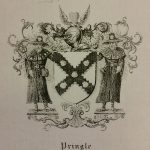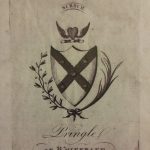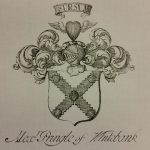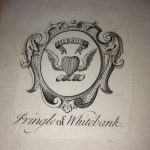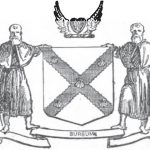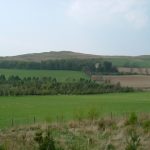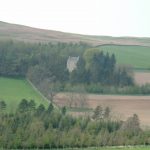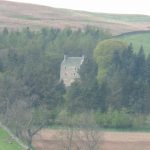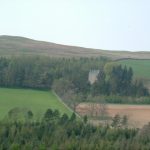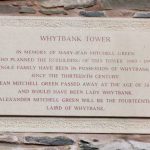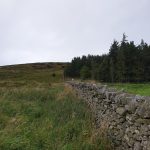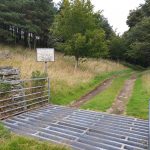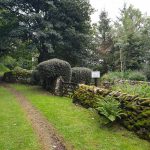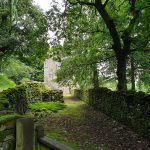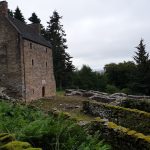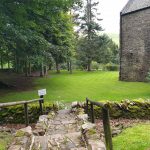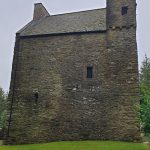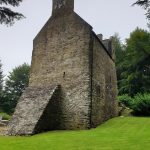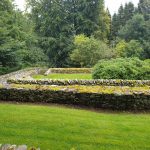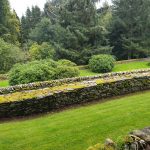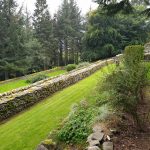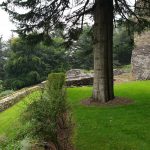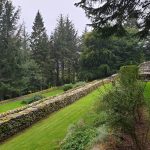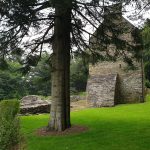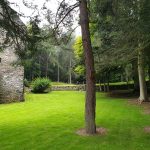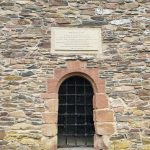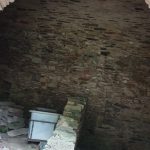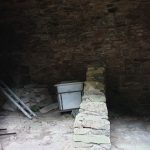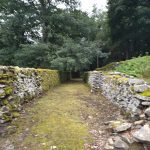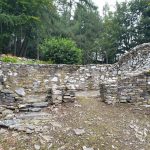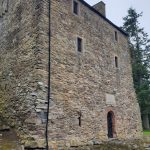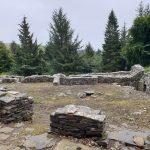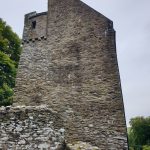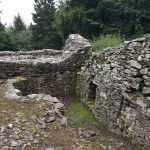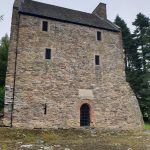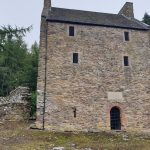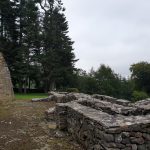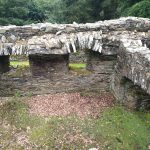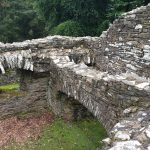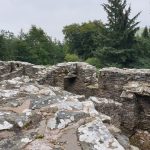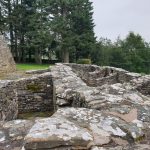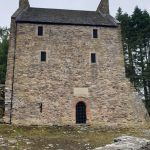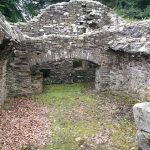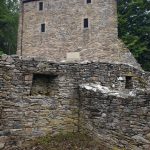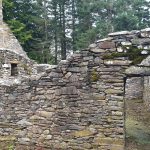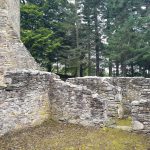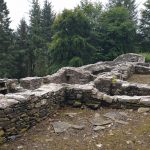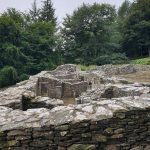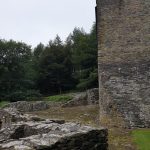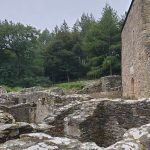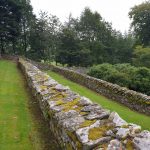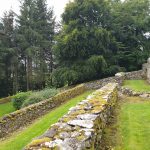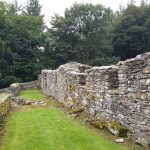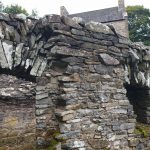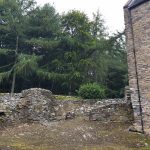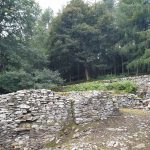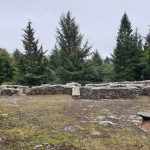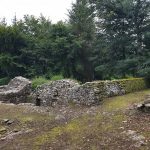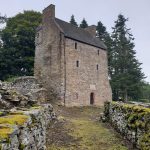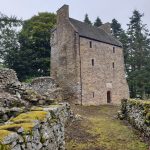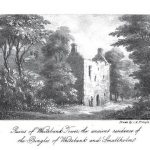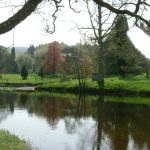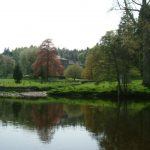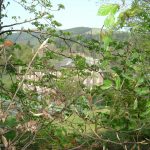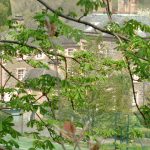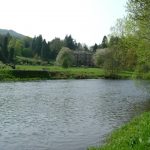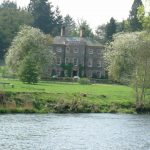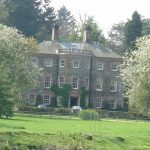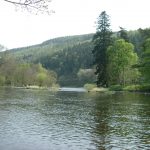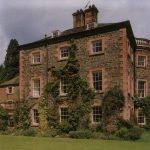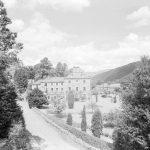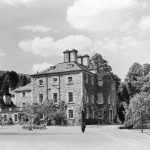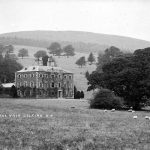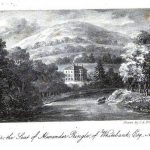Whytbank and Yair
Pringle of Whytbank and Yair
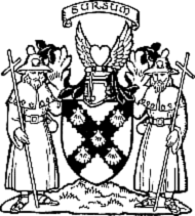
The lands of Whytbank were acquired by James Pringle in 1510. James was the son of the then current head of the Smailholm branch of the family, David Hoppringill. The lands of Yair were sold to creditors in the early 1700s, but then repurchased and a new mansion built on them in 1783 by Alexander Pringle of Whytbank.
Whytbank Tower, which was built by James Pringle, consists of a tower house and a courtyard which lie high up on the east slope of Knowes Hill. The Tower was restored in 1992 as a private residence.
Lineage of the Pringles of Whytbank and Yair:
- Robert Hoppringle, 1st of Smailholm, squire to Archibald, 4th Earl of Douglas, and Duke of Touraine, built Smailholm Tower, was at the Battle of Otterburn 1388, and was killed with the Earl at the Battle of Verneuil in Normandy, 24 Aug 1424.
- David Pringle of Pilmuir, who went to Rome with William, 8th Earl of Douglas 1450, Ranger of the Ward of Tweed under his brothers 1455-66, and succeeded his bro Robert as 4th of Smailholm; m Elspeth, dau of Sir William Dishington, of Ardross, and d 1480.
- James Pringle of Smailholm and Pilmuir, Ranger of the Ward of Tweed 1466-92, as part of his fee received the stead of Redhead or Whytbank, for which he paid a rent of £6, 3 cattle, and 20 lambs 1470; m Isabella, dau of Patrick Murray, 1st of Philiphaugh, and d 1495.
- David Pringle of Smailholm, had sasine of Smailholm, Pilmuir, and Halcroft June, 1495, received Whytbank from his f 1485, and bought Lour and part of Easter Dawick, Co Peebles Aug 1534, granted the lands of Woodhouse to his s, James, Dec 1534 (see Alexander Pringle’s Records of the Pringles or Hoppringills, Edinburgh, 1933); m as his 2nd wife, Margaret, dau of Thomas Lundie, of Fife, and d c 1535.
- James Hoppringill, first to be styled of Whytbank. Third son of David Pringle of Smailholm. 1550, at Battle of Solway Moss 1542; m Margaret Ker, of Linton, and d Nov 1563.
- James Hoppringill, 2nd of Whytbank, with 59 other Border lairds signed the Band of Jedburgh to rise in support of the Infant JAMES VI against Ker of Ferniehirst and other partisans of MARY, Queen of Scots 1571; m 1st (contr. 14 Dec 1566), Marion (d May, 1585), dau (by his 1st wife Elizabeth Lockhart), of Andrew Murray, 2nd of Blackbarony, and had issue, with a dau, Margaret (who m as his 1st wife, George Pringle, 4th of Torwoodlee, and d 1 Jan 1600.
- James Pringill, 3rd of Whytbank, MP for Selkirkshire, Sheriff Pncpl of that Co July, 1633, obtained the reversion of Yair form his friend, Patrick, Earl of Forth 1647, and received the resignation of it from the Earl’s widow, 10 Aug 1661; b c 1594; m Sophia, a Danish Maid of Honour of Queen Anne, Consort of King JAMES VI and I, whose wedding present to the bride, a gold chain and locket, is still in the family, (b 1604; d 1626), dau of Dr Martin Schoumlner, and d 14 May, 1667.
- Alexander Pringle, 4th of Whytbank, a Cromwellian Commr of Supply, under Act of Indemnity 9 Sept 1662, was fined £3,000 Scots for his pardon after the Restoration, matric arms at LO 1672-77; b 1626; m 1st, contr. Nov 1646, Anna (d Sept 1680), dau of James Pringle, 5th of Torwoodlee; and 2nd, 1682, Anna (who m 2nd, Robert Rutherford, of Bowland), dau of Sir John Murray, 4th of Philiphaugh, and dsp 25 April, 1695.
- John Pringle, 5th of Whytbank, served heir to his predecessor 1695, Commr of Supply, Selkirkshire 1698; b 1678; m 1699, Christian (d 1770), dau of Sir Patrick Scott of Ancrum, 2nd Bt, MP, and d 1702.
- Alexander Pringle, 6th of Whytbank; b Feb 1701; m 1740, Susannah (b c 1719; d April, 1791), dau of Sir John Rutherford, 15th of that Ilk, and d Feb 1773.
- John Pringle, 7th of Whytbank, Ensign 84th (Roy Highland Emigrant Regt), 16 July, 1776, Lt 5 Sept 1783, served through American War of Independence; d unm, 1780.
- Alexander Pringle, 8th of Whytbank, Writer HEICS 1766, Factor 1771, Jr Merchant at Masulipatam 1774, and Snr. Merchant 1778, on return from India repurchased the Yair which had been sold to the Duke of Buccleuch, Capt Cmdt Selkirkshire Vols. 1812; b Nov 1747; m 1789, Mary, dau of Sir Alexander Dick of Prestonfield, 3rd Bt, and d 1827.
- Alexander Pringle, 9th of Whytbank, and Yair, JP, DL, Vice-Lt. Selkirkshire, MP for Selkirkshire, a Ld of the Treas, in Sir Robert Peel’s Admin 1841-45, Keeper of Gen Register of Seizin in Scotland 1845, matric arms at LO 1828; 30 Jan 1791; m 12 Jan 1830, Agnes Joanna, 2nd dau and heiress-proportioner of Sir William Dick, 4th Bt, of Prestonfield, and d 2 Sept 1857.
- Alexander Pringle, 10th of Whytbank, and Yair, JP, DL, MA, Advocate; b 13 March, 1837; m 22 March, 1870, his cousin, MARY ARBUTHNOT (s her husband in Whytbank, and d 14 July, 1908, when the estates passed to her bro), dau of Robert Keith Pringle of Broadmeadows (4th son of the 8th Laird of Whytbank), and later of The Grove, Darley Dale, Derbys, and dsp 14 Sept 1898.
- Mary Arbuthnot Pringle of (11th) Whytbank
- William Pringle of Whytbank, (12th), and late of Yair (which he sold to Sir Kenneth Anderson, Bt 1924), Selkirkshire, formerly tea-planner at Cachar, Assam, served in WW I, Cmdt of group of POW camps in Norfolk, matric arms at LO 26 Jan 1935; m 12 Oct 1910, Gladys (d 15 April, 1933), est dau of T.F. Baylis, and d 31 Jan 1947, leaving issue,
- Alexander William Pringle, 13th Laird.
- Mary Gladys Pringle, CStJ (1952); b 24 Aug 1911; m 17 Nov 1947, Col Sir Harold Paton Mitchell of Tulliallen, 1st Bt (d 1983). and has issue,
- Mary-Jean Mitchell; b 26 May 1951. m. Mr Peter Green. Restored Whytbank Tower between 1987-1992.Died in 1990, leaving:
- Alexander Mitchell Green, who succeeded to Whytbank.
- Andrew Mitchell Green.
- Mary-Jean Mitchell; b 26 May 1951. m. Mr Peter Green. Restored Whytbank Tower between 1987-1992.Died in 1990, leaving:
- Alexander William Pringle of Whytbank, TD (1954), 13th of Whytbank, Selkirkshire, late Maj KOSB (TA), served in WW II in India, Capt TARO, s his f as 13th of Whytbank 1947 and matric arms at LO 10 Oct 1984; b 7 Aug 1913; educ Clifton; m 25 July, 1936, Helena Kathleen Grace, elder dau of late Capt Sydney Bennetts, OBE, RN, of Clovelly, Stubbington, nr Fareham, Hants. Died 16/10/2003 without a male heir.
- Alexander Mitchell Green, 14th Laird of Whytbank. Succeeded his Grand Uncle the 13th Laird and is now the current owner of Whytbank Tower.
News about Alexander Mitchell Green: http://bernews.com/2012/10/green-family-in-for-the-long-haul/
About Mary-Jean Mitchell Green: https://www.cancer.bm/get-involved/mary-jean-mitchell-green
Mary-Jean Mitchell Green’s book: https://www.amazon.co.uk/Our-Star-Sky-Mary-Jean-Mitchell-ebook/dp/B006JSPNZO
The recorded Arms of Sir Harold Mitchell of Tulliallan – on this page (24th shield down): http://www.heraldry-online.org.uk/mitchell.html
Whytbank Tower, An Aerial Observation: https://youtu.be/cyaWWv4rrJ0
Download the online book: ‘Select remains of John Alexander Pringle, Esq (1841)’
Yair House
Designed by the Architect William Elliot, Yair house was built in 1788 by Alexander Pringle of Whytbank (1747 – 1827), who had returned from India with a substantial fortune and bought back his family estate four years previously. The lands had belonged to the Pringles from 1510, who also held nearby Whytbank Tower, but had been sold to satisfy creditors in the early 18th century. A fine classical mansion and estate of the Scottish Borders, The Yair lies on the right bank of the River Tweed 2½ miles (4 km) northwest of Selkirk and 3 miles (5 km) southwest of Galashiels. Comprising of a square Georgian main block of three storeys and an attic with a wing attached to it. The E-facing front has seven bays and a central bow, while the rear comprises a later courtyard and U-plan service court. The plan of the principal floor is simple; the entrance leads into a circular vestibule, with the main staircase to the rear, a dining room to the left and a morning room and gun room to the right. One the first floor is a drawing room and bow-ended library. The decoration is restrained classical throughout and the fireplaces are modest. The initials “A. P.” and the date of 1788 are carved above the staircase window. Nearby is Yair Bridge built in 1759, one of 24 bridges over the Tweed which were built in this period due to the development of toll roads. It replaced the river crossing by boat or ford.
Broadmeadows House
Described as a late Georgian country mansion constructed in the Palladian style, it was built by a younger son of the Pringles of Whytbank and Yair. It is located on the Yarrow near Newark Castle. See the website: www.broadmeadowshouse.com. It is available to rent as a holiday home.

